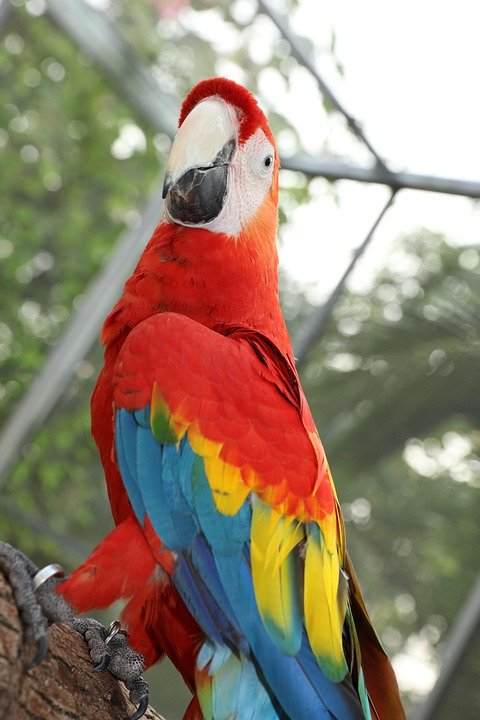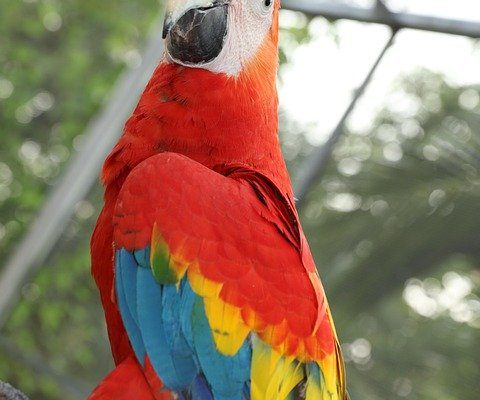
Macaws are fascinating creatures, often seen in regions like Central and South America. They’re not just pretty faces; they play a vital role in their ecosystem. However, if you spot one, it’s essential to know how to approach the situation respectfully and safely. Here’s everything you need to keep in mind if you find yourself face-to-face with a macaw in its natural habitat.
Understanding Macaws: The Basics
Macaws are large, colorful parrots belonging to the family Psittacidae. They’re known for their striking golden-yellow, bright blue, and rich red feathers. Not only do they look stunning, but they also have remarkable vocal abilities, often imitating sounds and human speech. You might find them nesting in tree cavities or flying in pairs, showcasing their playful nature.
These birds typically inhabit tropical and subtropical rainforests, but they can also adapt to savannas and other dry woodlands. If you’re lucky enough to encounter a macaw, you’ll likely see it foraging for fruits, nuts, and seeds, which are crucial to its diet. Understanding their habits helps you appreciate them even more, while also knowing how to behave around them.
Stay Calm and Observant
When you spot a macaw, your first instinct might be excitement. However, it’s important to remain calm. Sudden movements or loud noises can scare the bird away. Instead, take a moment to observe its behavior. Is it foraging, flying, or simply resting? Watching from a distance is the best way to enjoy the encounter without disturbing the bird.
Try to find a good spot where you can watch without getting too close. Macaws are naturally curious and may come closer if they feel safe. In situations like this, patience really is a virtue! You might find yourself taken in by their antics, as they often play and socialize with one another.
Keeping Your Distance
Respecting the macaw’s space is key. Just like us, these birds need their privacy and may feel threatened if you approach too closely. A good rule of thumb is to stay at least 100 feet away. This distance helps ensure the macaw feels safe and can go about its business.
If you’re with a group, spread out a bit. The more you can minimize your presence, the better! Macaws might fly away if they sense a crowd closing in. Instead, let them come to you! Remember, you’re merely a guest in their home.
Document the Experience Respectfully
If you have a camera or smartphone, capturing a photo can be a wonderful way to remember your encounter. However, keep a few things in mind:
- No Flash: Flash photography can be stressful and disorienting for wildlife. Opt for natural light instead.
- Long Zoom: Use a zoom lens or the zoom feature on your phone. This lets you take great shots without getting too close.
- Be Mindful: Avoid taking too many pictures, which can create noise and disturbances.
A few thoughtful photos are much better than a flood of them. Plus, you’ll appreciate the moment more when you’re not constantly focused on your device.
Appreciating Their Role in the Ecosystem
Seeing a macaw isn’t just about the thrill of the sighting; it’s also a chance to reflect on their role in the ecosystem. Macaws help disperse seeds and maintain the rainforests where they live. They play an essential part in keeping the forest healthy and thriving.
If you’re passionate about protecting wildlife, consider supporting conservation efforts. Whether it’s through donations or volunteering, every little bit helps ensure that these gorgeous creatures continue to thrive in their natural habitats for generations to come.
What If the Macaw Seems Injured or Distressed?
If you come across a macaw that looks injured or in distress, it’s crucial to act responsibly. Do not attempt to touch or handle the bird. Instead, keep your distance and observe its behavior. If it seems in serious trouble, contact a local wildlife rescue organization or park ranger who can provide the necessary assistance.
It’s important to understand that wildlife should be left to heal naturally, if possible. Interfering may do more harm than good. That said, reporting the situation to experts can ensure the bird receives the care it needs.
Encountering a macaw in the wild can be a magical experience. It’s a reminder of the beauty of nature and the importance of respecting wildlife. By staying calm, keeping your distance, and appreciating their role in the ecosystem, you can savor the moment while also ensuring the safety of these incredible birds.
So, next time you find yourself wandering in the wild and spot a flash of color above, remember these tips. You might just have a delightful story to tell! Just like that cup of coffee we shared over the thought of spotting a macaw, this experience can leave a lasting impression—one that encourages you to protect and cherish the natural world.

